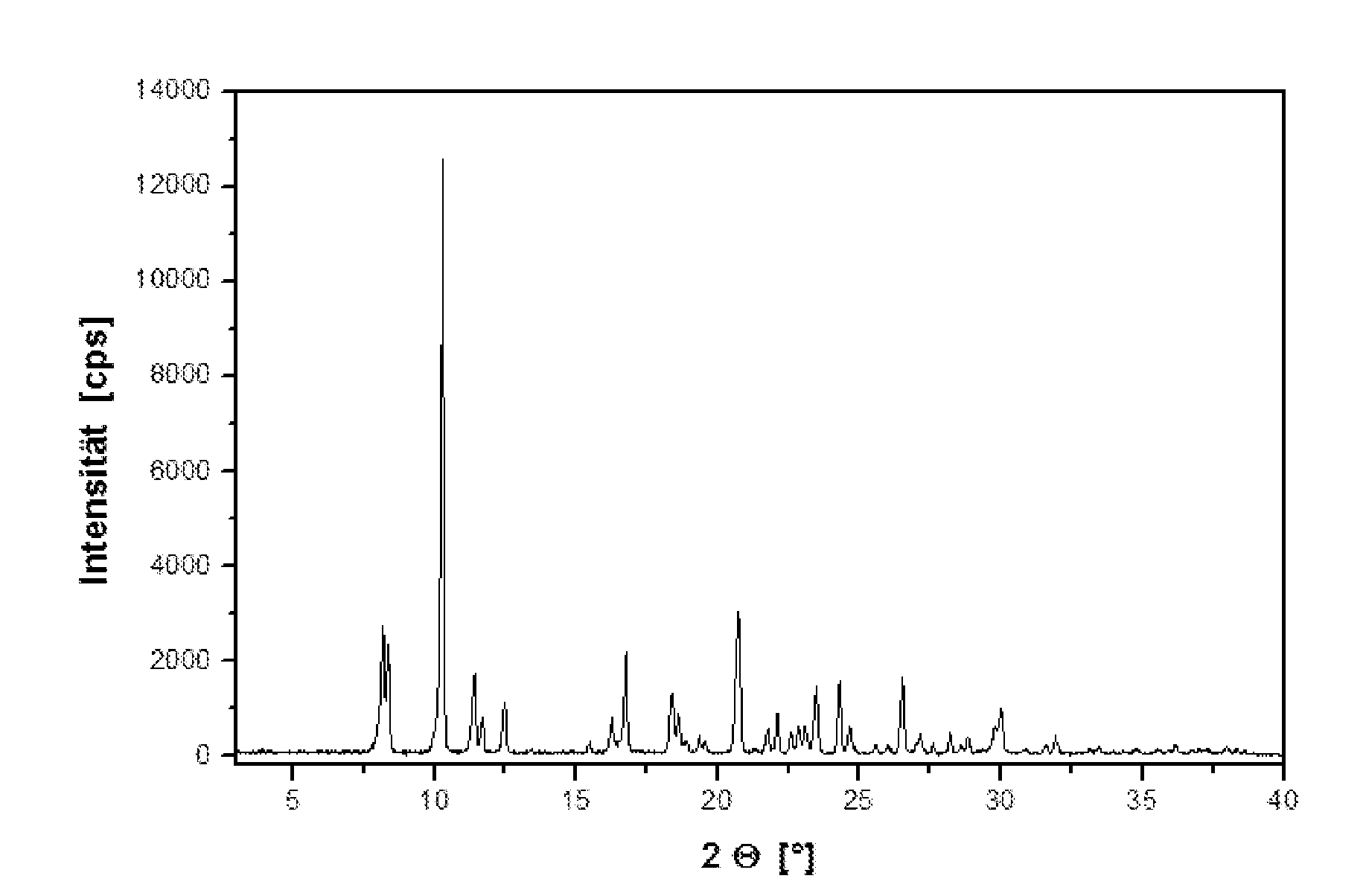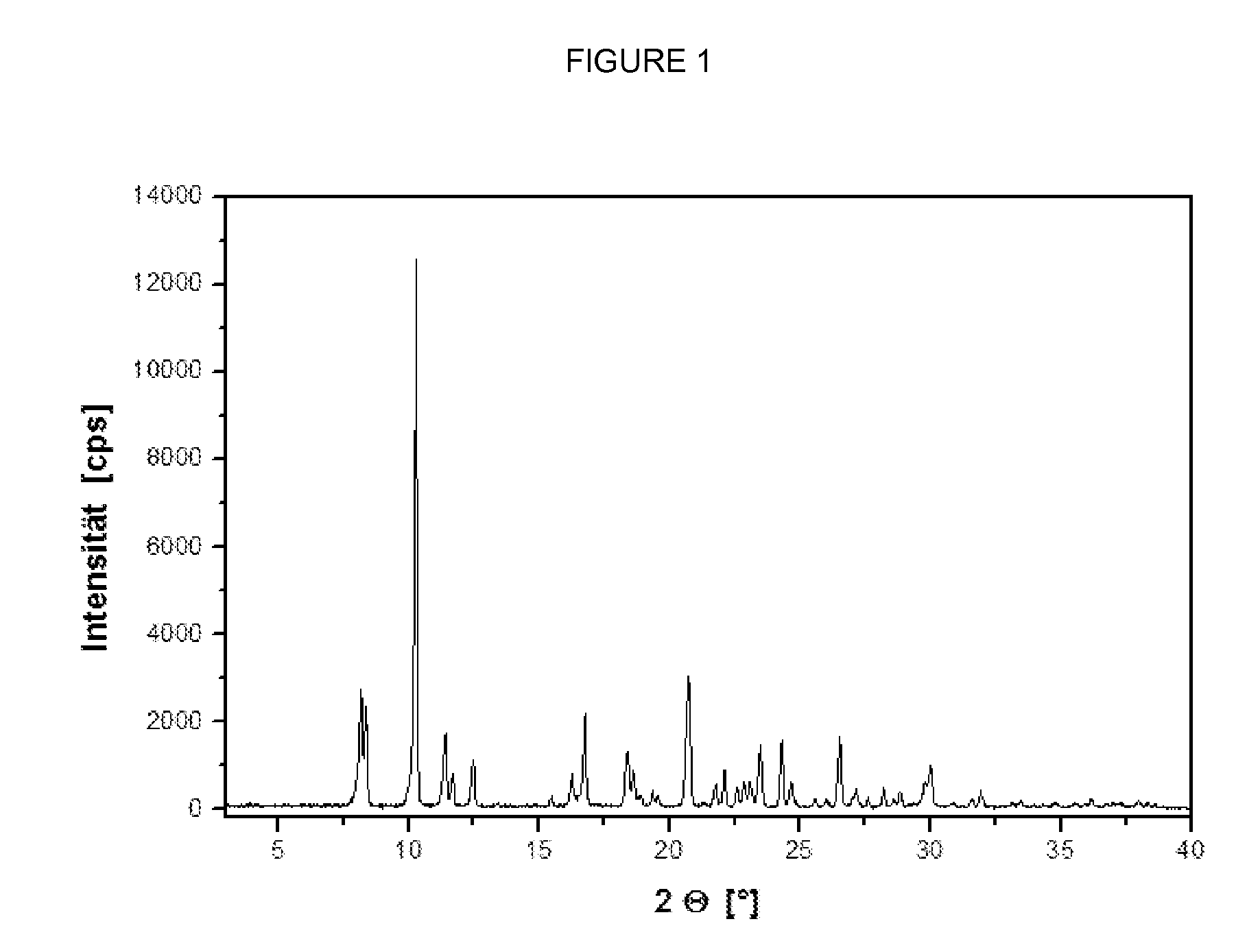8-(3-amino-piperidin-1-yl)-xanthines, their preparation, and their use as pharmaceuticals
a technology of xanthines and xanthines, which is applied in the field of new substituted xanthines, can solve the problems of reducing the content of pharmaceutically active substances during manufacture, and absorbing moisture, so as to reduce the content of pharmaceutically active substances, increase weight, and high stability
- Summary
- Abstract
- Description
- Claims
- Application Information
AI Technical Summary
Benefits of technology
Problems solved by technology
Method used
Image
Examples
example 1
D-tartaric acid salt of the R-enantiomer of 3-(phthalimido)piperidine
[0032] a. Hydrogenation:
[0033] 10.00 kg (106.25 mol) of 3-aminopyridine, 500 g of industrial grade activated charcoal and 65 litres of acetic acid are placed in the hydrogenation reactor. 50 g of Nishimura catalyst (a commercially obtainable mixed rhodium / platinum catalyst) are added, suspended in 2.5 litres of acetic acid, and the mixture is rinsed with 2.5 litres of acetic acid. It is hydrogenated at 50° C. and 100 bar excess hydrogen pressure until the hydrogen uptake has stopped and then hydrogenated for a further 30 minutes at 50° C. The catalyst and the activated charcoal are filtered off and washed with 10 litres of acetic acid.
[0034] The reaction will also succeed under less drastic pressures.
b. Acylation:
[0035] 15.74 kg (106.25 mol) phthalic anhydride are placed in the reactor and combined with the filtrate from the hydrogenation. The mixture is rinsed with 7.5 litres of acetic acid, and then the r...
example 2
Preparation of 1-[(3-cyano-pyridin-2-yl)methyl]-3-methyl-7-(2-butyn-1-yl)-8-[(R)-3-amino-piperidin-1-yl]-xanthine base
a. 3-cyano-2-(chloromethyl)-pyridine
[0039] 165.5 g (0.98 mol) 2-hydroxymethyl-3-pyridinecarboxamide are heated together with 270 ml of phosphorus oxychloride for 1 hour at 90-100° C. The reaction mixture is cooled to ambient temperature and then added dropwise to about 800 ml of water at a temperature of 50-60° C. After hydrolysis of the phosphorus oxychloride the mixture is neutralised while being cooled with sodium hydroxide solution, whereupon the product is precipitated. It is filtered off, washed with 300 ml of water and then dried at 35-40° C.
[0040] Yield: 122.6 g (82% of theoretical)
b. 1-[(3-cyano-pyridin-2-yl)methyl]-3-methyl-7-(2-butyn-1-yl)-8-bromo-xanthine
[0041]
[0042] 202 g (0.68 mol) 3-methyl-7-(2-butyn-1-yl)-8-bromo-xanthine, 188.5 g (1.36 mol) anhydrous potassium carbonate and 1.68 litres of N-methyl-2-pyrrolidone are placed in the reactor and heat...
example 3
1-[(3-cyano-pyridin-2-yl)methyl]-3-methyl-7-(2-butyn-1-yl)-8-[(R)-3-amino-piperidin-1-yl]-xanthine monohydrochloride
[0054] 5.00 g of 1-[(3-cyano-pyridin-2-yl)methyl]-3-methyl-7-(2-butyn-1-yl)-8-[(R)-3-amino-piperidin-1-yl]-xanthine base are dissolved in 50 ml of methanol. Then 3.0 ml of a 3.9 molar solution of hydrogen chloride in isopropanol are added. The solvent is distilled off and the residue is suspended in 40 ml ethyl acetate and refluxed, during which time a precipitate is formed. It is cooled to ambient temperature, the precipitate is filtered off and washed with a little ethyl acetate and dried.
[0055] The product is then recrystallised from absolute ethanol.
[0056] Yield: 2.7 g (50% of theory)
[0057] melting point: 265±5° C. (with decomposition)
[0058] The monohydrochloride exhibits less marked hygroscopic characteristics; there is no reversible change into a hydrate phase as is observed with the free base between 50 and 60% r.h. (see the absorption characteristics of th...
PUM
| Property | Measurement | Unit |
|---|---|---|
| pressure | aaaaa | aaaaa |
| temperature | aaaaa | aaaaa |
| temperature | aaaaa | aaaaa |
Abstract
Description
Claims
Application Information
 Login to View More
Login to View More - R&D
- Intellectual Property
- Life Sciences
- Materials
- Tech Scout
- Unparalleled Data Quality
- Higher Quality Content
- 60% Fewer Hallucinations
Browse by: Latest US Patents, China's latest patents, Technical Efficacy Thesaurus, Application Domain, Technology Topic, Popular Technical Reports.
© 2025 PatSnap. All rights reserved.Legal|Privacy policy|Modern Slavery Act Transparency Statement|Sitemap|About US| Contact US: help@patsnap.com



